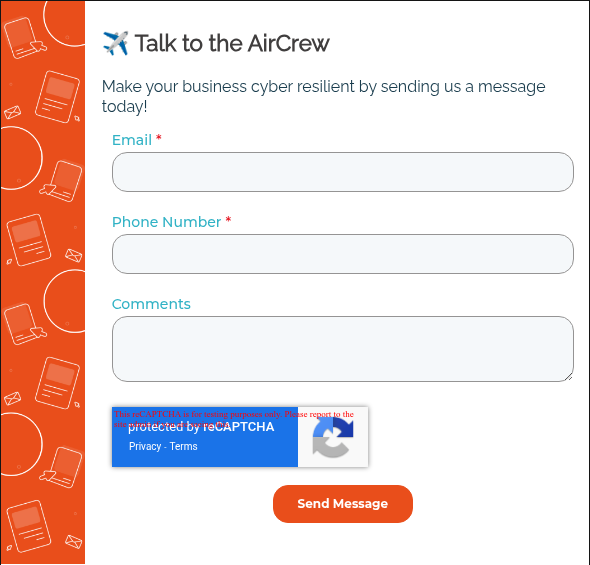We’re approaching the end of the year, and with 2025 quickly fading in the rearview, we need to start assessing the new landscape to prepare for 2026. It’s no secret that the last year has brought huge innovations in AI and normalized its usage in the workforce and at home. But what do these changes mean for small businesses? Staying ahead of these changes is critical for IT security teams and decision-makers. Read on as we explore cybersecurity trends for 2026 that will shape the future and how organizations can prepare.
AI-Powered Cyber Threats Will Dominate
One of the most significant developments is the rise of AI-driven threats. For example, this past year, a major financial institution reported an AI-driven phishing campaign that generated thousands of unique, convincing emails in minutes, bypassing traditional spam filters.
In 2026, expect attackers to use AI for:
- Adaptive malware that learns and evolves.
- Hyper-personalized phishing campaigns that mimic human behavior.
Artificial intelligence is no longer just a defensive tool; it is transforming both defense and offense in cybersecurity. This means traditional security measures will struggle to keep up. IT security teams must invest in AI-powered defense solutions and real-time threat intelligence to counter these evolving risks effectively.
Zero Trust Architecture Becomes Standard
Another trend gaining momentum is the widespread adoption of Zero Trust architecture. As remote work and cloud services continue to dominate, perimeter-based security models are becoming obsolete.
Zero Trust is built on identity-centric controls and least privilege access and is shifting from a best practice to a baseline requirement. Organizations that fail to implement these measures risk leaving critical systems exposed. The opposite, however, is hopeful. A global SaaS provider implemented Zero Trust and reduced insider threat incidents by 40% within six months. This shows that while Zero Trust has become a requirement, it also stands to heavily improve your security systems.
Preparing for Quantum Computing Risks
Quantum computing is also one of the cybersecurity trends for 2026, and while it promises incredible advancements, it poses a serious challenge to encryption. Current cryptographic methods could become vulnerable, making post-quantum cryptography a priority for forward-thinking IT security teams.
IT security leaders should:
- Begin adopting post-quantum cryptography.
- Monitor NIST guidelines for quantum-safe algorithms.
NIST has already published draft standards for post-quantum cryptography, signaling urgency for adoption.
Regulatory Compliance Will Intensify
Regulatory compliance will tighten significantly in 2026. Governments worldwide are introducing stricter breach reporting timelines and expanding data privacy laws. For global organizations, this means navigating complex cross-border compliance requirements. The EU’s NIS2 Directive is already requiring stricter breach reporting and imposing heavy fines for non-compliance.
IT security leaders should ensure their governance frameworks are robust and adaptable to avoid costly penalties. Invest in compliance automation and governance tools to avoid penalties.
Cloud Security and API Protection Take Center Stage
As businesses migrate workloads to the cloud, APIs have become the backbone of modern applications—and a prime target for attackers. APIs often handle sensitive data and connect critical services, making them an attractive entry point for cybercriminals. In 2025, an API misconfiguration led to a major data breach affecting millions of users in a popular fintech app. This breach highlighted how a single overlooked setting can lead to catastrophic consequences.
Focus areas for IT security:
- Implement API security gateways.
- Use continuous monitoring for cloud environments.
The Cybersecurity Skills Gap Widens
Finally, the cybersecurity skills gap is widening. Demand for skilled professionals continues to outpace supply, forcing organizations to rely more on automation and managed security services. An ISC² report from 2023 showed a global shortage of over 4 million cybersecurity professionals. In 2024, the ISC² 2024 Cybersecurity Workforce Study revealed that although the active global workforce plateaued at approximately 5.5 million, the demand rose to 10.2 million.
This gap translates into slower incident response times, higher breach costs, and mounting pressure on existing teams.
Solutions for 2026:
- Upskill internal teams with advanced training.
- Partner with MSSPs (Managed Security Service Providers) for 24/7 coverage.
The cybersecurity skills gap is not expected to close anytime soon, making proactive strategies essential. Organizations that prioritize workforce development and strategic partnerships will be better equipped to navigate the challenges of cybersecurity trends for 2026 and beyond.
Building a Future-Ready IT Security Strategy Around Cybersecurity Trends for 2026
The cybersecurity trends for 2026 highlight a future where proactive strategies, advanced technologies, and strong governance are key. IT security leaders who act now by embracing AI defenses, implementing Zero Trust, preparing for quantum threats, and addressing compliance and talent challenges, will be best positioned to protect their organizations against tomorrow’s risks.
Got questions? We have answers.


